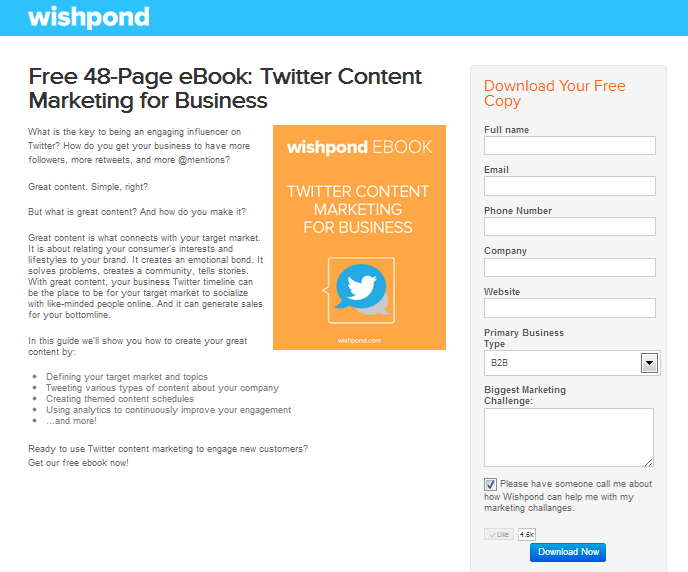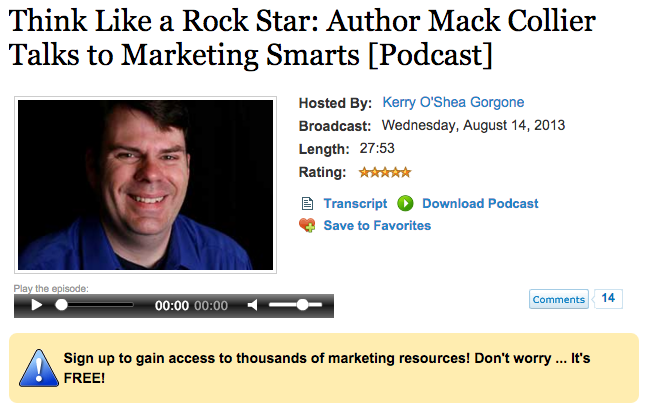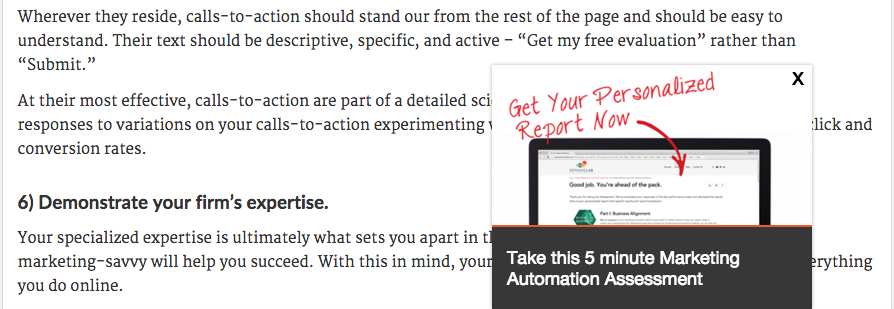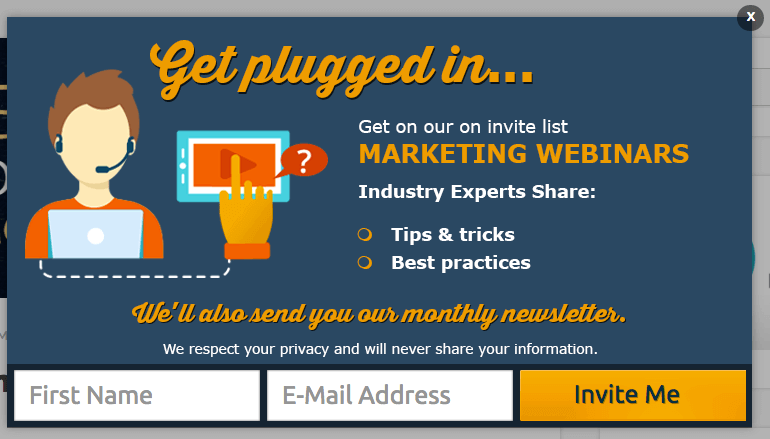Email marketers have been facing the gated content debate for some time in different capacities. We are increasingly asking ourselves, should our email campaigns link to online content that is guarded by a gate process or is it a channel faux-pas?
What is "gated" content?
First let’s start by clarifying what gated content is, as tit can take many different forms. Essentially, when you gate content, you place an obstacle between a prospect and the content. To overcome the obstacle and gain entry, the prospect has to complete an action. Usually, this is a simple form, and the prospect is asked for contact details or maybe just an email address. Later on, marketers use this information for soft lead generation or email list building. This is a tried and tested method and relatively painless for all concerned but, there is a more extreme version.
Enter, the paid gateway, which insists on payment from the prospect before access to specific content is provided.
Typically content gating exists heavily in a B2B capacity as a way to generate leads and gather contact information. No surprises there – we all need to keep our email and prospects lists healthy! Gated content also exists in a consumer capacity – if you are more B2C than B2B don’t feel like you have to miss out. In January 2010, the New York Times boldly introduced a site-wide pay wall that restricted visitors to a set number of article views per month before triggering a paid subscription for ‘unlimited’ content access. It may have been a shock to the industry at the time, but it has now become is increasingly common.
In this article, let’s focus on the B2B side of gated content. There are two forms of content gate processes you should know about:
Method 1: Users arrive at a landing page they want to view, containing the content they’re expecting. Before they can gain access they must enter required data such as their name and email. Once this information is given, they can progress to viewing and browsing the content. Below are sample of this.


Method 2: Users on your site will find a piece of content that triggers a call to action. This usually rears its head in the form of a pop-up or link trail that leads them to the desired content in exchange for requested information. This type of gating may be disguised in the form of an downloadable content e.g. a PDF download or emailed content, sent to the address the user provided.
In the sampe below, a pop-up appears and offers readers a personalized report for taking a five minute marketing automation assessment. The assessment gathers the readers information.

Many marketers, including Pinpointe, also use pop-up gates to gather emails to send out specific information. The sample below is triggered when someone goes to view one of Pinpointe's webinar blog posts. Once users fill out the super short gated form, they are put on the invite list for upcoming webinars.

Pros and Cons to Using Gated Content
The Pros
- Sense of Premium – Gating your content is a bit like playing hard to get. As long as you don’t play too hard, it can make your content appear more valuable to your user, providing you get the nature of your gate process spot on. After all, why give away extremely valuable content for nothing, right?
- Soft Lead Generation – Naturally B2B business is generated from leads and initial contact gathering which have to come from somewhere. Gathering information via content gating allows you to build on your contact pool. It also gives you an opportunity to pursue them as appropriate with the end goal of earning a new client or generating a sale.
- Content Provides Context – The type of content being accessed at the point of collecting information gives you some immediate indications of the interests and current frame of mind of the user. This can help to tailor an approach or more accurately bucket your newly earned contacts.
The Cons
- Gates keep out more than just users – Gating content keeps users from accessing content without completing your process. But when it comes to search engine spiders, you’re keeping them out entirely. In basic terms, this means your gate guarded content has little to no SEO (organic search) value. For those brands who are slaving away to produce relevant content to boost rankings in search engines like Google and Bing, this is a considerable con.
- Reduced content exposure – It will come as no surprise to tell you that gate guarded content is viewed far less often than non-gate guarded content. Industry averages would suggest gated content is at least 10x less likely to be viewed than its free counterparts. So there is a call to be made here as to whether or not the significant reduction in overall content views is worth the data gathering at your gate.
- Bad lead magnet – The main purpose of gates for content in a B2B capacity is lead generation. The con with content gate generated leads is that they are very ‘soft’ leads. There will undoubtedly be a lot of poor leads collected, from which the information gathered has been fabricated (hands up if you have ever filled in a form with a fake name or telephone number). This happens when the user wants to get to your content whilst actively trying to pre-empt the email subscription and phone calls that may follow. So you will have a job to do sifting through these leads.
Additionally, you may have some idea of a user’s interests dependent on the content they have gained access to, but there is no guarantee these users have genuine client or sale potential. You won’t even know if they are decision makers within their respective organization.
Those are some of the main pros and cons to gating your content. Unfortunately, these weigh up pretty equally on both sides begging the question, how do you make the decision on whether or not to gate your content? It all comes down to making a key set of evaluations about your business and the content itself.
Things to consider before gating your content:
The types of content values
Online content serves a variety of purposes within any business. The absolute fundamental purpose of content is for your users or visitors to gain information about you, your products or your services, who you are and why you exist. This is the primary reason alongside transactional services that businesses have websites at all. Gating all your content just isn’t realistic, so it’s important to look at the content you have and categorize it appropriately.
For an example, most businesses keep a blog. The blog content serves two primary purposes. It gives SEO benefit by adding to your overall site’s amount of relevant industry content. The use of keywords within that content will also play a role in potentially improving your search engine visibility. Blogs also provide visitors with additional content relevant to you and your business. These may be thought pieces or industry statistics to help generate interest as well as being topic specific pages for linking purposes and social sharing. If you gate content like this, you are most certainly hindering yourself. The leads and data collected from your gate will not make up for the other value this content brings by being openly visible to all.
Ask yourself if your content is valuable enough to gate. Is this something a user could easily get elsewhere as a result of another Google search that might be quicker than filling in your gate’s data collection? Is this unique to your business or highly valuable content? If it is, then you can give serious consideration to using a gate. As with all online call to actions, there needs to be a strong enough element or desire or sense of reward presented for users to complete your requested actions. Valuable types of content include white papers or industry reviews that are both unique but also substantial in scale and value to the right individual.
Review the content funnel below to get a better idea of what to gate and what should be registration free.
Logistically can you handle these leads?
Does your business have the time and personnel available to turn what will likely be relatively soft leads into genuine new business opportunities? If you don’t have this structure in place, then it’s likely the positive impact of your content being available for all to view is more valuable in generating direct leads instead. Even if you do have the right structure in place, have you reviewed its success rate? How many of those soft leads do you need to acquire to generate revenue and is that revenue worth the time spent chasing the leads in the first place?
As with any marketing techniques, and to use the age old cliché, there is no one size fits all solution when it comes to gating your content. If you ask yourself the right questions, and you take a good look at the content you have and its current main purpose to the business, it should be relatively clear if a gate is appropriate.
It could be you’re reading this because you want to use a content gate to generate more leads from your website, but you’re struggling to find the right way to do this. A strong consideration should be given at this stage to investing the time and money in creating content that is valuable enough to warrant a gate.
If in doubt, test! The proof, as always, is in the pudding.







